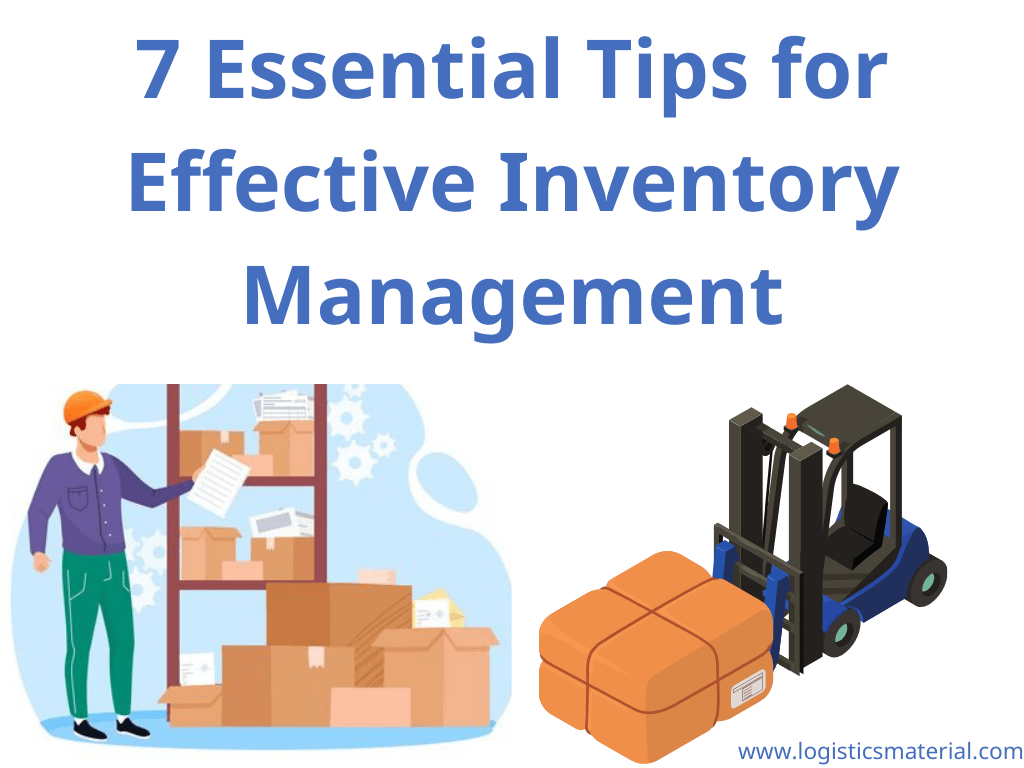
7 Essential Tips for Effective Inventory Management
What is inventory management system
Inventory management system is a crucial aspect of any business that deals with products. It refers to the process of overseeing and controlling the flow of goods from the moment they are acquired to the moment they are sold or used. In simpler terms, it is the practice of keeping track of your inventory, ensuring that you have the right amount of products at the right time to meet customer demand. Effective inventory management involves a variety of tasks, including tracking stock levels, monitoring sales trends, forecasting demand, and implementing strategies to optimize inventory turnover. It requires a systematic approach to ensure that your business operates efficiently and minimizes costs while meeting customer expectations. By implementing effective inventory management practices, businesses can achieve a range of benefits. These include reducing stockouts and overstock situations, improving cash flow by minimizing excess inventory, enhancing customer satisfaction by ensuring product availability and increasing overall operational efficiency. In summary, inventory management is the process of efficiently and effectively managing the flow of goods within a business. It plays a vital role in maintaining a balanced supply and demand equilibrium, allowing businesses to maximize profitability and maintain a competitive edge in the market.
In the following sections, we will delve into seven essential tips to help you improve your inventory management and achieve optimal results. Whether you are a small business owner or a seasoned entrepreneur, these tips will equip you with the knowledge and tools necessary to maintain accurate inventory records, prevent stockouts, and ultimately improve your bottom line. So, let’s dive in and discover the key principles behind effective inventory management.tec
1) Understand customer demand
Understanding customer demand is crucial for effective inventory management. By analyzing past sales data and market trends, you can gain insights into which products are in high demand and which ones are not. This knowledge allows you to make informed decisions about what to stock and how much to order. Implementing a robust inventory control system that tracks customer demand can help you prevent stockouts and overstocking, both of which can be costly for your business. Additionally, conducting regular customer surveys or gathering feedback directly from your customers can provide valuable insights into their preferences and buying patterns. This information can guide your inventory planning and ensure that you are stocking the right products at the right time. By staying in tune with customer demand, you can optimize your inventory levels, reduce holding costs, and enhance customer satisfaction by consistently meeting their needs.
2) Implement an inventory management system
Implementing an inventory management system is crucial for any business that wants to streamline operations and ensure accurate inventory levels. With the right system in place, you can track your inventory in real time, automate processes, and reduce the risk of overstocking or stockouts.
Here are some essential tips for implementing an effective inventory management system:
1. Assess your needs
Before choosing an inventory management system, evaluate your specific requirements. Consider factors such as the size of your business, the number of products you sell, and your growth projections.
2. Choose the right software
Selecting the right inventory control system software is crucial. Look for a system that aligns with your business’s needs, and offers features like barcode scanning, inventory tracking, and reporting capabilities. Additionally, ensure that the software integrates smoothly with your existing systems, such as your e-commerce platform or point-of-sale system.
3. Organize your inventory
Before inputting data into the system, ensure that your physical inventory is well-organized. Label products, establish a logical location system, and conduct regular audits to maintain accuracy.
4. Set up accurate tracking
Implement a system that allows you to track inventory in real time. This way, you can monitor stock levels, track sales trends, and make informed decisions regarding reordering and restocking.
5. Train your staff
When implementing a new inventory management system, provide thorough training to your staff. Ensure they understand how to use the software, enter data accurately, and perform routine inventory checks.
6. Establish processes and procedures
Develop clear processes and procedures for receiving, storing, and fulfilling orders. This will help maintain consistency and efficiency across your inventory management practices.
7. Regularly review and optimize
Continuously review your inventory management system’s performance and make necessary adjustments. Regularly analyze data and reports to identify areas for improvement, such as reducing carrying costs and optimizing order quantities.
By implementing an effective inventory management system, you can gain better control over your inventory, improve accuracy, and enhance overall operational efficiency. Take the time to select the right software, organize your inventory, and train your staff effectively to maximize the benefits of your system.
3) Set up stock control measures
Setting up stock control measures is crucial for effective inventory management. Without proper control measures in place, it can be challenging to keep track of your inventory levels accurately.
Here are some essential tips to help you establish effective stock control measures:
1. Categorize your inventory
Start by categorizing your products based on their types, sizes, or any other relevant criteria. This will make it easier to track and manage your inventory.
2. Implement a barcode system
Utilize barcode technology to track your inventory accurately. This allows for efficient scanning and recording of stock levels, reducing the chances of manual errors.
3. Set minimum and maximum stock levels
Determine the minimum and maximum quantities for each product. This will help you know when to reorder and maintain optimal stock levels, avoiding stockouts or excessive inventory.
4. Use inventory management software
Invest in inventory management software that suits your business needs. These tools can automate inventory tracking, generate reports, and provide real-time visibility into stock levels.
5. Conduct regular stock checks
Schedule routine physical inventory counts to reconcile actual stock levels with the recorded quantities. This will help identify discrepancies and prevent inventory shrinkage or losses.
6. Implement a first-in, first-out (FIFO) approach
Organize your inventory based on the FIFO principle, where the oldest items are sold or used first. This ensures that perishable or time-sensitive products are not left unused or expired.
7. Establish supplier relationships
Develop strong relationships with your suppliers to ensure timely deliveries, negotiate favorable terms, and maintain a steady supply chain. This helps in avoiding stock shortages and delays.
By implementing these stock control measures, you can streamline your inventory management process, reduce costs, and optimize your operations for better business outcomes.
4) Regularly track and analyze inventory data
Regularly tracking and analyzing inventory data is a crucial aspect of effective inventory management. By doing so, you gain valuable insights into your inventory levels, sales patterns, and overall performance. This data allows you to make informed decisions and take proactive steps to optimize your inventory management processes.
One important aspect of tracking inventory data is conducting regular physical counts to reconcile the quantities on hand with what is recorded in your system. This helps identify any discrepancies, such as stockouts or overstocks, ensuring accurate inventory levels.
Additionally, utilizing inventory management software can simplify the tracking and analysis process. These software solutions provide real-time visibility into your inventory, allowing you to monitor stock levels, track sales, and generate comprehensive reports. This data serves as a foundation for making data-driven decisions and implementing effective inventory strategies.
Analyzing inventory data goes beyond just tracking quantities. It involves examining key performance indicators (KPIs) such as inventory turnover rate, lead time, and stock accuracy. These metrics offer insights into the efficiency of your inventory management practices, highlighting areas for improvement and identifying potential issues before they impact your operations.
Furthermore, analyzing sales data alongside your inventory data can help identify trends, forecast demand, and optimize stock levels. By understanding which products are top sellers and which are slow-moving, you can adjust your purchasing and stocking strategies accordingly, ensuring you have the right products at the right time.
Regularly tracking and analyzing inventory data also allows you to identify any obsolete or slow-moving items. By taking prompt action to clear out such inventory, you free up valuable storage space and reduce the risk of holding onto unsellable products.
5) Optimize stock levels
One of the most important aspects of effective inventory management is optimizing stock levels. Keeping the right amount of stock on hand is crucial for ensuring smooth operations and avoiding unnecessary costs.
1. Analyze historical data
To precisely predict future demand, consider previous sales trends and patterns. By doing this, you may prevent overstocking or running out of in-demand products.
2. Set par levels
Determine the minimum and maximum stock levels for each item based on factors like lead time, demand variability, and storage space. Reorder items when they reach the par level to maintain optimal inventory levels.
3. Implement a just-in-time (JIT) approach
Adopting a JIT methodology means receiving inventory only when it’s needed, minimizing storage costs, and reducing the risk of obsolescence.
4. Embrace ABC analysis
Categorize your inventory based on their value and prioritize management efforts accordingly. Classify items as A (high-value, low-quantity), B (moderate-value, moderate-quantity), or C (low-value, high-quantity) to focus on high-priority items.
5. Establish effective supplier relationships
Work closely with your suppliers to ensure prompt delivery, accurate lead times, and favorable pricing. Strong supplier relationships can help prevent stockouts and reduce excess inventory.
6. Utilize technology
Invest in inventory management software that provides real-time insights, automates processes, and improves accuracy. This allows for better forecasting, tracking, and replenishment decisions.
7. Regularly conduct inventory audits to identify discrepancies and solve problems
Maintaining optimal stock levels is a constant balancing act. Holding too much inventory ties up capital and risks obsolescence, while insufficient stock leads to lost sales and frustrated customers. The key to navigating this challenge lies in accurate stock data. Theft, shrinkage, or even simple data entry errors can create discrepancies between your records and your actual inventory.
Inventory audits are your secret weapon to solve this problem. By physically counting your stock and comparing it to your records, you can uncover these discrepancies. Addressing these issues ensures your records accurately reflect reality, eliminating the foundation for stock management chaos. More importantly, regular audits help you anticipate stockouts. By identifying low stock levels early, you can place timely orders and avoid those dreaded “out-of-stock” notices. This not only keeps your customers happy but also prevents lost revenue opportunities. So, make inventory audits a cornerstone of your stock management strategy – they’re the key to unlocking optimal stock levels and a smoother-running business.
This revision weaves the problem-solving (“the key to navigating this challenge…”) into the existing flow, emphasizing how inventory audits directly address the issue of inaccurate data and lead to a well-functioning stock management system.
By following these seven essential tips, you can optimize your stock levels, minimize costs, and improve overall inventory management. This will ultimately lead to higher customer satisfaction, increased profitability, and smoother operations for your business
6) Establish effective supplier relationships
Establishing effective supplier relationships is crucial for efficient inventory management. When you have strong and reliable relationships with your suppliers, it can lead to numerous benefits for your business. Firstly, open and clear communication with your suppliers is key. By keeping them informed about your inventory needs, you can ensure that they are prepared to meet your demands and avoid any potential stockouts or delays. It is also beneficial to establish regular meetings or check-ins with your suppliers to discuss any changes in demand or upcoming promotions. This will help both parties plan accordingly and avoid any unforeseen issues. Another important aspect of supplier relationships is negotiating favorable terms and pricing. By having a good rapport with your suppliers, you may be able to secure better pricing, discounts, or extended credit terms, which can have a significant impact on your bottom line. Additionally, building strong relationships with your suppliers can lead to better product quality and consistency. By working closely together, you can communicate your specific requirements and ensure that the products you receive meet your standards. Finally, it is essential to have backup suppliers or alternative options in case of emergencies or disruptions in the supply chain. Maintaining multiple relationships will help mitigate risks and ensure that you have access to the necessary inventory at all times. Overall, establishing effective supplier relationships is vital for successful inventory management, as it can help streamline operations, improve communication, and create a solid foundation for your business’s growth and success.
7) Continuously review and improve your inventory management process.
Inventory management is a crucial aspect of running a successful business, and it requires continuous review and improvement. As your business grows and evolves, so will your inventory needs. Therefore, it is important to regularly evaluate your inventory control system to ensure that it is efficient and effective.
Collecting and analyzing data is one of the first stages in evaluating your inventory management system. Examine your inventory levels, order fulfillment timelines, and turnover rates carefully. Determine any places where inefficiencies or bottlenecks could exist.
Once you have identified areas for improvement, brainstorm and implement solutions. This may involve streamlining your ordering process, optimizing your storage and organization methods, or integrating inventory management software.
Regularly monitoring and updating your inventory records is also essential. Keep track of incoming and outgoing inventory, and make sure all data is accurate and up to date. This will help you identify any discrepancies or potential issues early on.
Another important aspect of improving your inventory management process is to establish clear and effective communication channels with suppliers and distributors. Regularly communicate with them to ensure that you have accurate information about product availability, lead times, and any potential disruptions in the supply chain and logistics strategies.
Investing in technology and automation can greatly enhance your inventory management process. Consider implementing barcode scanning systems, RFID technology, or inventory management software to streamline operations and reduce human error.
Regularly train and educate your employees on proper inventory management practices. Make sure they understand the importance of accurate data entry, proper handling and storage techniques, and efficient order fulfillment processes.
By continuously reviewing and improving your inventory management process, you can ensure that your business operates smoothly, optimizes inventory levels, minimizes costs, and ultimately provides better service to your customers.
Conclusion
We hope you found our blog post on effective inventory management systems helpful. Managing an inventory system is a crucial aspect of any business, and with the right tips and strategies, you can streamline your operations and improve profitability. By implementing the seven essential tips we discussed, you can minimize stockouts, reduce carrying costs, and optimize your inventory levels. Remember, efficient inventory management is an ongoing process that requires continuous monitoring and adjustment.
Thank you for reading, and we wish you success in your inventory management system endeavors!


